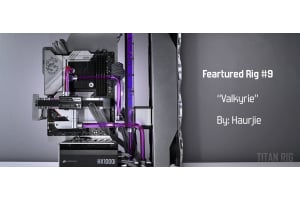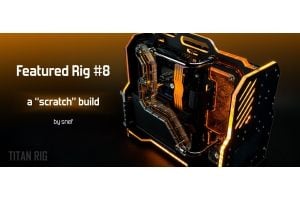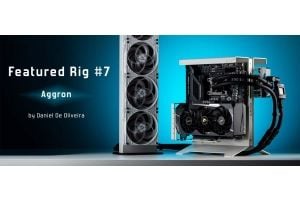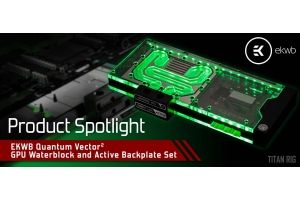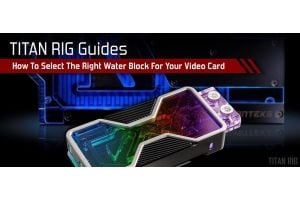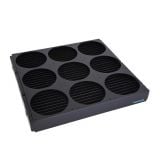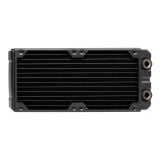2-Day Expedited Shipping Only $14.95 - See Restrictions
Water Cooling Components - Radiators
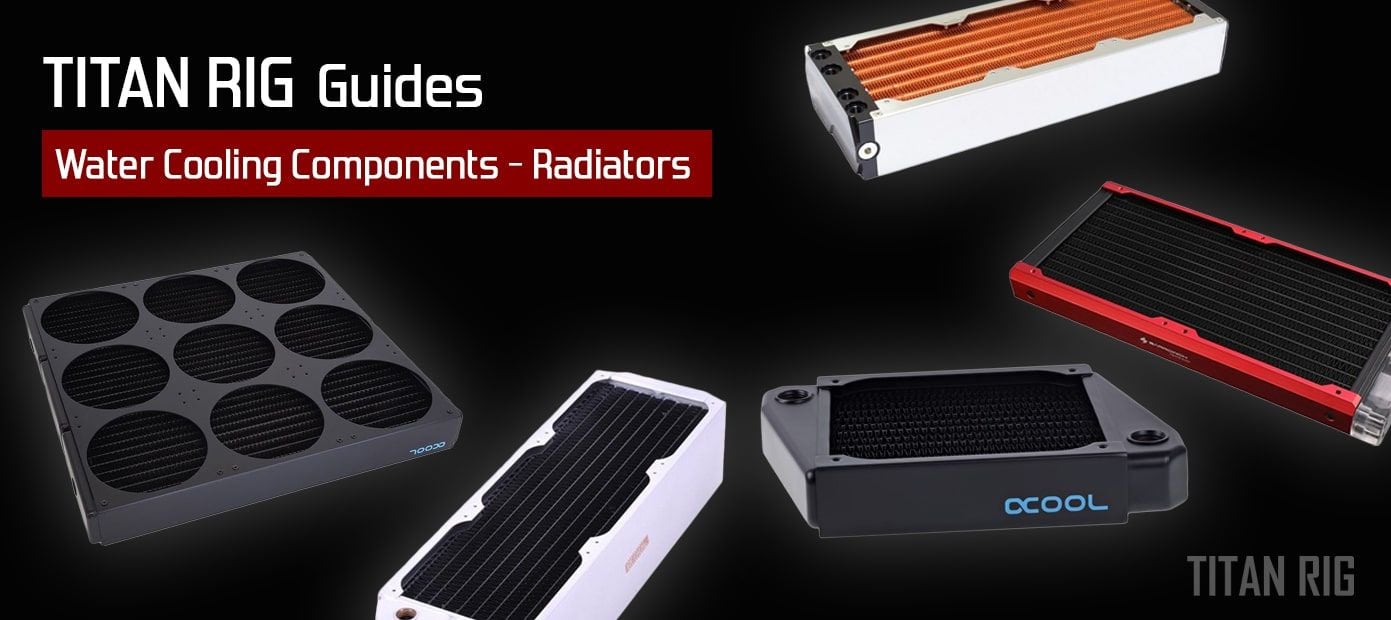
Welcome back to the Component Series. We hope to help builders both new and old to understand their options when it comes to the components in their custom water cooling loops. In today’s entry we look at the complexities of modern PC water cooling radiators.
Truth be told, PC water cooling is really air cooling. To understand that, you only have to understand one thing: heat moves. It’s a universal constant. Anywhere that there’s a difference in temperature heat will try to move to the area with a lower temperature. The greater the difference in temperature, the faster it moves. Once the temperatures equalize the movement stops.
In your water cooled PC, heat travels from a critical part into the water blocks mounted to it, since the block is colder than the part. From there it’s picked up by the cooler water flowing through it and moved away to the radiator As the liquid flows through the tubes of the radiator, the heat moves one more time into the ambient air, assuming it’s cooler than the liquid in the radiator. So while liquid may cool our precious parts, it’s air that cools the liquid to start the cycle again.
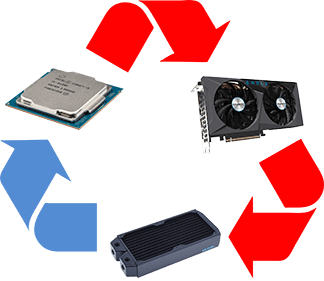
The heat cycle in a custom PC water loop.
Without good heat transfer from the coolant to the outside air, the rest of the system will suffer. Choosing the right radiator will maximize your heat transfer and help the efficiency of the entire system.
So how do you choose the right radiator (or radiators) for your water cooling needs?
While radiators are simple in construction and their function is easy to understand, there are more factors to consider in a PC radiator than in any other part of your custom water cooling loop.
Let’s look at the things to consider.

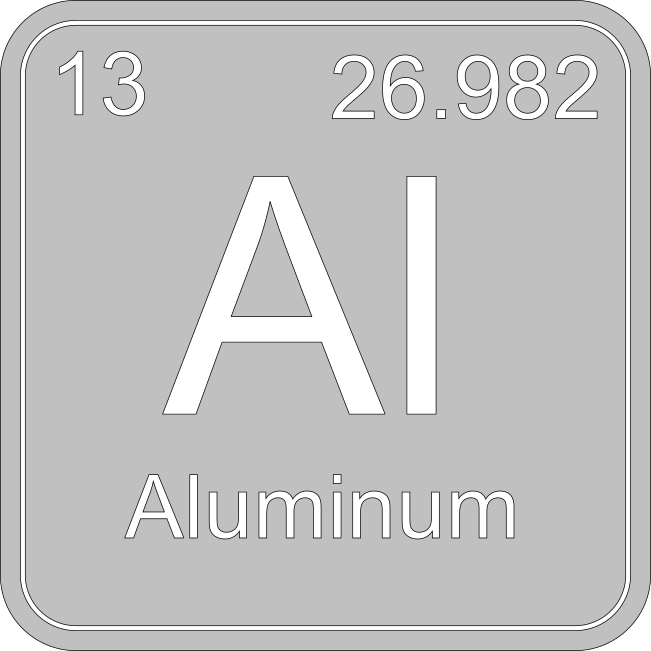
Copper and aluminum are the primary materials in PC cooling radiators. Brass is often used for the end tanks.
Materials
Yes, we’re going to go over materials again. It’s important. Just like other water cooling parts, radiators are made with different materials across different brands and models. While aluminum radiators are available and effective, they should only be used in a water cooling loop with all aluminum components. The single exception to this is zinc-alloy radiators. These radiators are designed for use in a mixed-metal system, but the zinc acts as a sacrificial annode. It will corrode over time - how long depends on the process used to manufacture it.
Today’s water cooling radiators are typically made with copper, brass and aluminum. The chambers at the ends of the radiator are usually brass, though copper isn’t uncommon and a few are acrylic or acetal. The cooling fins will be copper or aluminum. This is one of the few places that aluminum is acceptable in your water cooling loop, since the fins are never in contact with the coolant.
Copper and brass work well together, and the two plastics used don’t react with any metals so corrosion isn’t an issue. None of the other materials offer the thermal transfer performance that copper does but they’re less expensive and allow the manufacturers who use them to offer these products at a lower price. Given how small the tanks are, any impact on performance will be minimal.
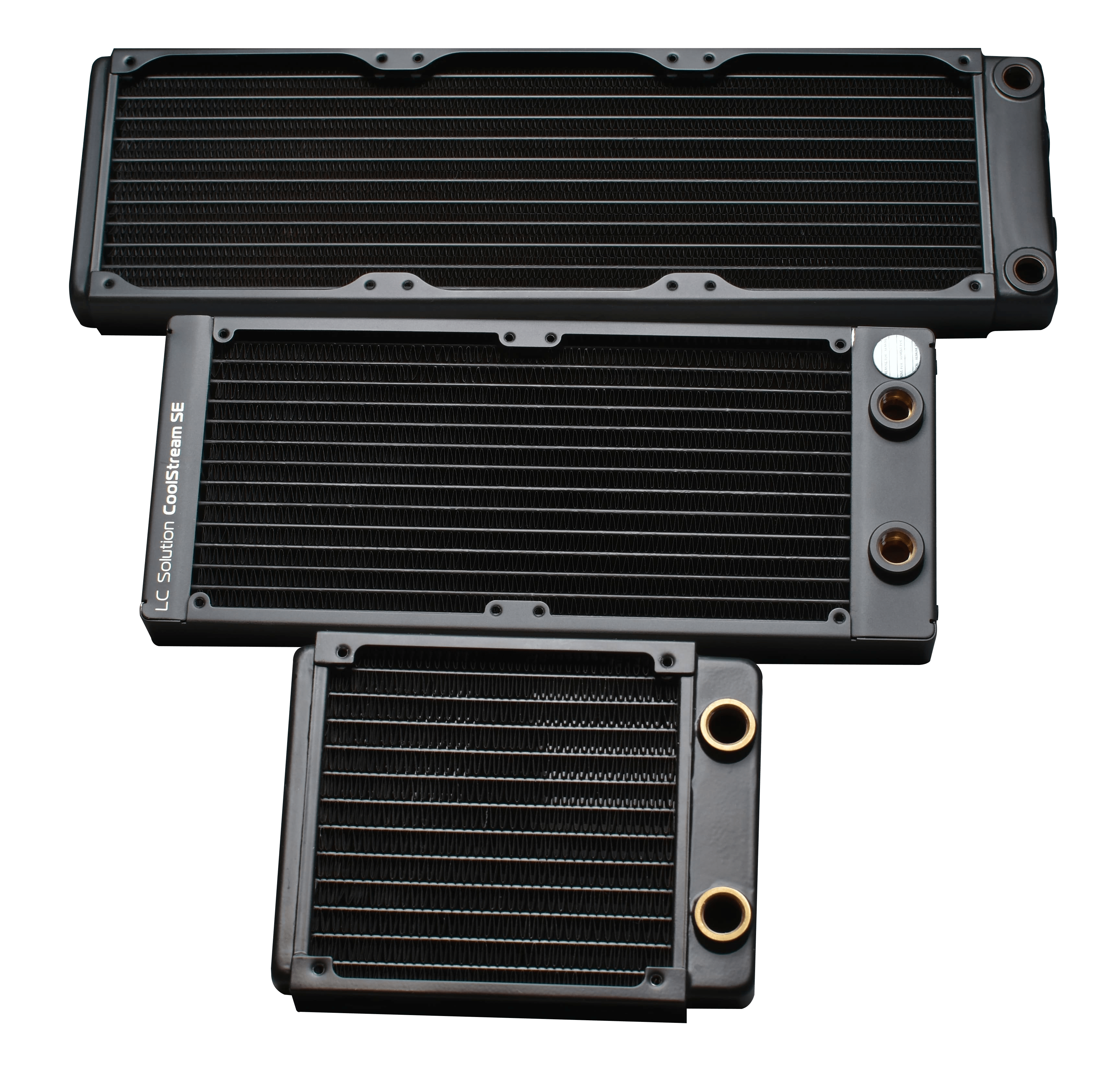
Three common sizes of PC cooling radiators: 360mm, 240mm and 120mm.
Size
Size is a simple factor but in the case of a PC radiator it has a couple of different implications. The first is fit. Will the radiator physically fit inside your PC case? Can you mount it in the spot and orientation you want?
The first number you’ll always see when you’re looking at a radiator’s size isn’t its length, width or thickness. It’s the sum total of fans that it was designed to work with along one side of the radiator. For example, a 360mm radiator is designed to work with three 120mm fans along 1 side (3 x 120 = 360), and a 280mm radiator is designed to work with two 140mm fans along 1 side (2 x 140 = 280). Less commonly, you may also see a 360mm radiator shown as 120.3, or a 280mm radiator sown as 140.2.
This overall total fan size number won’t always tell you if a given radiator will fit in your PC case though. Not long ago you could safely assume that a PC case that advertised being able to house a 360mm radiator would house any 360mm case on the market. Not so today.
Advances and styling changes in both PC case design and radiator design have created some clearance issues that have to be considered to answer the “will it fit” question. This is even more important to the ever-growing group of small form-factor enthusiasts.
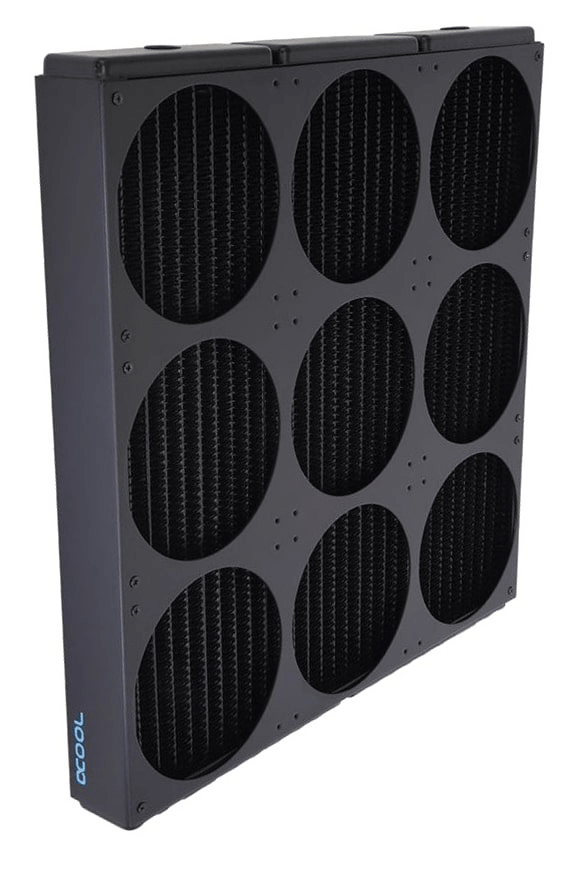
Alphacool’s 1080mm Nova radiator – not for the SFF crowd.
Just about all radiator manufacturers will list the actual dimensions of their product: length, width and thickness. Those are the numbers that have to be used to check to see if a radiator you’re considering will fit in a given space.
Many PC case makers will offer the radiator space limitations in their product info, but not all them. Manual measurement is best anyway.
When you’re planning out your radiator placement and measurements, don’t forget to include the thickness of the fans that you plan to use with it. Many less experienced builders have made that mistake and ended up having to modify their plans.
Port / Flow Orientation – Dual pass vs Crossflow
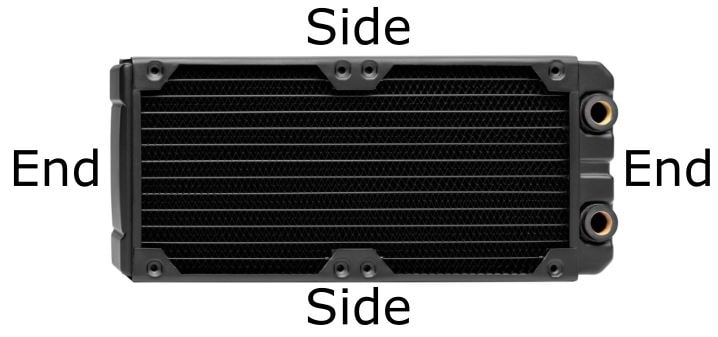
For purposes of this article, the term “end” refers to the ends of the radiator where the tanks are installed. “Side” refers to the solid sides of the cooling core between the tanks.
Dual-Pass
The standard PC radiator is known as a dual-pass radiator. It’s called that because the coolant makes two passes along the length of the radiator through the cooling tubes. In a dual-pass radiator, all the ports (with the exception of a drain port if it has one) will be at one end. Coolant goes in a port on that end, flows to the opposite end of the radiator, through the chamber on the far end and returns to the end it started out from on the other side.
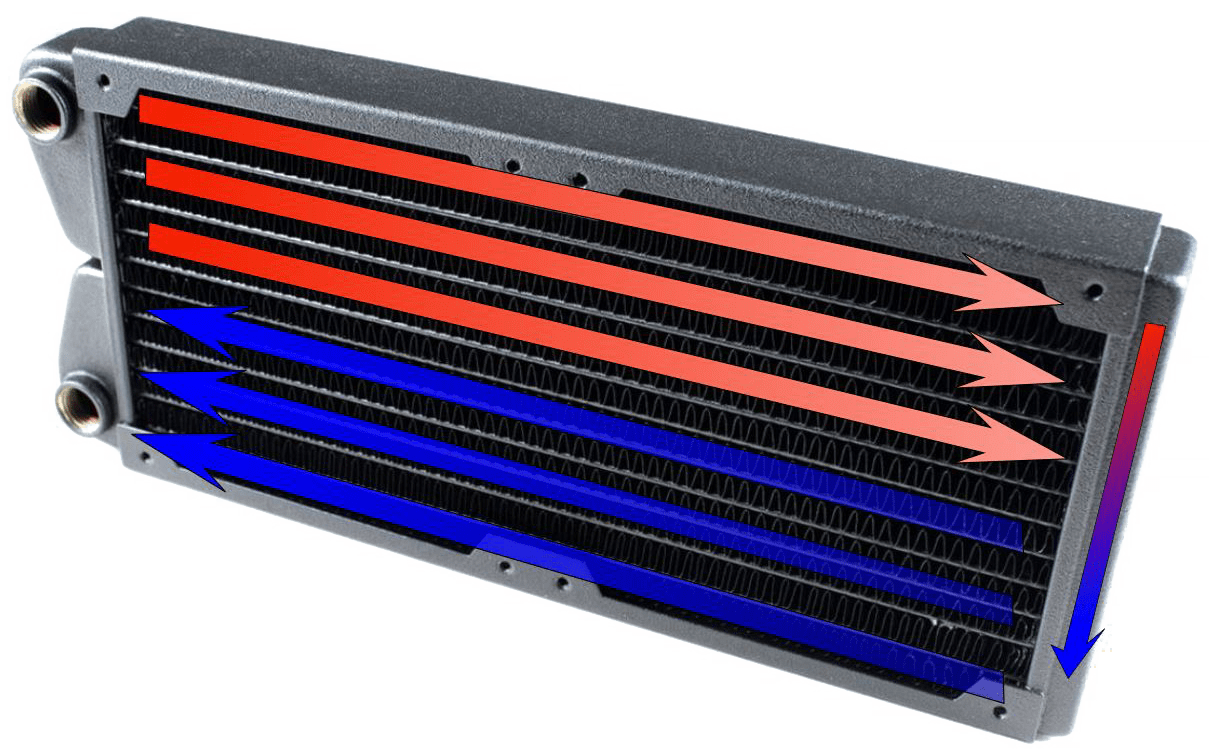
Flow pattern of a dual-pass radiator. Coolant enters and exits from the same end of the radiator.
To achieve this, the tank on the input/output end will be divided in two. On some radiators this is visible as a deep V shape in the middle, forming two completely separate tanks.
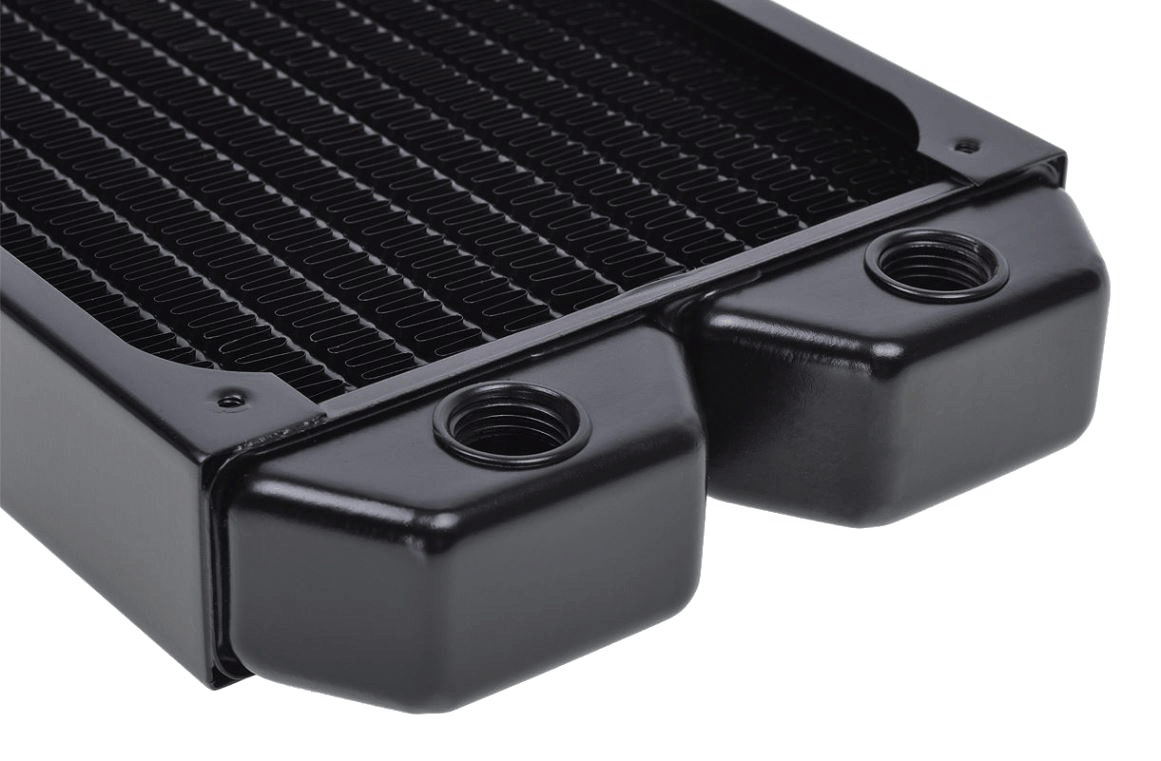
The inlet and outlet tanks on this dual-pass radiator are clearly separated.
Not all dual-pass radiators have this V shape though – some have what appears to be a single tank on the end. These tanks will have a dividing panel installed inside, creating two separate tanks.
The tank end opposite the input/output end of a dual-pass radiator is typically smaller than the split tank also, since it only serves to direct the coolant flow back to the end it came from.
Dual-flow radiators typically offer only two ports, but some models may have four or even six available on the input/output end, and a few even have a single port on the other end to allow for draining the radiator.
In the image below you can see the inner workings of a typical dual-pass radiator. I’d like to personally thank this little EK Coolstream Classic SE 120 for donating its body to science.
A dissected dual-pass radiator. Note the plate welded to the inside of the upper tank, separating it into two.
Crossflow
Crossflow radiators are single-pass radiators. Instead of dividing the cooling tubes in half and sending the coolant on a round trip back to the end it started at, crossflow radiators split the coolant flow to all the cooling tubes immediately and send it on a one-way path to the other end.
Flow pattern of a crossflow radiator. Coolant enters one end of the radiator and exits the other end.
Crossflow radiators will always have ports on both ends. Like dual-pass radiators, some may offer more than two but they will always be present on both ends of the radiator.

Two different types of multiport crossflow radiators. Care must be taken with input and output on the first style.
The end tanks on crossflow radiators are normally the same size on both ends. This will typically make it longer than an equivalent dual-pass radiator, making measurement of the actual radiator even more important.
The construction of a crossflow radiators means that coolant will flow from any port to any other port. There are no closed areas inside. That makes the choice of ports to use for intake and output very important, as that’s what controls the amount of coolant that’s actually flowing through the tubes and shedding its heat.
Flow directions and cooling results from different inlet and outlet positions on a multiport crossflow radiator.
Intake and outflow ports should be on opposite ends and opposite sides of any crossflow radiator.
Which is better?
When you compare crossflow and dual-pass radiators, remember that they all use the same cooling cores. These tube-and fin cores are used to construct both types – the only difference in construction are the end tanks.
Testing has shown that when all other factors are equal there is a slight performance advantage on the part of the dual-pass radiator, which is why most radiators on the market are made in this style.
The margin of improvement was very small however. Bear that in mind when choosing a radiator. If the form factor of a crossflow radiator makes your tube routing easier or the appearance better, it may well be worth the small loss.
Cooling Capacity
There are a lot of things that determine the overall cooling capacity of a radiator – some of which don’t even involve the radiator itself.
Size
Like any air cooler, the cooling surface area of a radiator has more effect on its cooling capacity than anything else. Typical wisdom says to allow 120mm of radiator space per component being cooled plus another 120mm. This rule of thumb is honestly outdated as some of today’s hardware puts out more heat than any components did when the rule was made, but it’s a start. Consider this a minimum.
Remember also that the commonly-referenced fan size measurement only describes two dimensions in a radiator’s size. Thickness is important also.
Thickness
Logic says that a thicker radiator will perform better than a thinner one, simply because of the increased surface area. While that’s true in general, to enjoy the full benefits of a thicker radiator you have to be able to get air flow across the whole thing. That typically means more fans, higher-pressure fans or faster fans – all which can add up to more noise.
Materials
Differences in materials used won’t affect the overall cooling capacity of a radiator by enough to measure without very sensitive instruments so we won’t take that into consideration.
Fin Density
Fin density is a measurement of how many cooling fins a radiator has in a given space, usually measured in FPI or Fins Per Inch. The denser the fins the better it will cool but the more air flow it will take due to smaller passages between fins. This has to be handled with fan selection just like a thicker radiator.

Differences in fin density. The left radiator has 18 fins per inch, while the right has 8. Note that damage to fins like seen on the right will have virtually no effect on your radiator’s performance.
Flow Rate
The rate at which your cooling fluid moves through the radiator will affect its cooling ability. Flow rate is a function of the restriction of the radiator and the performance of your water pump. I won’t get into flow rates and head pressure here – look for a Components post on pumps in the near future, we’ll cover all that there.
A note on the numbers: Some manufacturers will list cooling capacity figures for their radiators, calculated in watts. These numbers are irrelevant to your cooling system, so use them only to compare theoretical capacities with other radiators from the same manufacturer. For example, if they offer two versions of 240mm radiator, you might use these numbers to know that one offers more cooling capacity than the other. Anything beyond that is guesswork.
Features
While I’ve mentioned them previously, it’s worth listing some features you might want to look for in your next radiator.
• Drain port – This is simply an additional port on the end of the radiator opposite the inlet/outlet ports.It makes draining the radiator (and possibly the entire water cooling loop depending on where it’s placed) easier to drain.
• Screw shields – Radiators have metal tabs on their frame with threaded holes to mount fans onto them.These holes are almost always directly above the cooling core, meaning that if screws are used that are too long the screw could penetrate the core and damage fins or even puncture a coolant tube. A screw shield is a second metal tab underneath the first that prevents this from happening.
A screw shield on this radiator prevents accidental damage to the cooling core when installing fans.
• RGB – The RGB trend has found its way to radiators, with models available with backlit logos and even RGB strips that cover the full side of the radiator.
RGB lighting is finding its way into everything PC related – even radiators.
• Monitors – A few radiators are available with built-in OLED displays and temperature sensors.
Aesthetics
This is another area that’s changed fairly recently. Radiators used to be the barest and most boring-looking part of your PC. They all looked very much the same – black. A few were offered in white but that was all.
Today you can not only buy radiators in a range of colors, but some even have replaceable colored side plates so you can change your colors if you want.
BarrowCH Chameleon Fish radiator with interchangeable anodized aluminum side panels and integrated OLED temperature display.
Fact vs Fiction
You may have heard some commonly-circulated “facts” about water-cooling radiators.
“Thicker radiators cool better.”
“A high fin count makes a system loud.”
“A push/pull fan setup is best.”
“Always put your radiators at the top of your case because heat rises.”
The first three statements above are true in certain circumstances.
Thicker radiators cool better if they have enough air flow. Between a thick and thin radiator with low to moderate but equal air flow the thinner radiator will very likely perform better.
A high fin count can make a cooling setup loud if the air flow is high enough. High fin counts make for more effective cooling through increased surface area but they need more air flow to overcome the restriction caused by the high fin count. Depending on your fans, that air flow can be loud if it’s high enough.
A push/pull setup is sometimes the best way to go. Using fans on both sides of the radiator is fine but if your radiator is cooling as well as it possibly can with fans on only one side, doubling your fan count is only going to cost more money and make the whole setup louder.
Heat rises by convection. It’s a force of nature, but it’s a very weak force. The slightest bit of mechanical forced air movement will overcome convection without measurable effort. In other words, convection is meaningless the second you install a fan and turn it on. Put your radiators where they can get adequate air flow in and out.
How do I decide?
With all these factors individually and all the permutations possible with them in combination, how do you decide what to get? The first step to that is deciding on what you want.
Since aesthetics are too subjective for me to even comment on, let’s look at the other two reasons people get into water cooling: performance and noise.
Are you after the absolute best cooling performance possible without concern for cost or noise? Cram as much radiator space into your PC as you can with high-speed fans on both sides of each and turn them all the way up. You can use as many as you want in an external setup.
Is silent cooling more your thing? Again, use as much radiator space as you can but make sure your radiators have a low FPI count and install low-speed high static pressure fans on one side only. Turn your fans up to just below the noise level you want.
You can consider those two examples to be extremes of both reasons, but the logic works. What you end up with will depend on other factors like your budget and compromises will likely have to be made in one area or the other. Knowing all the factors involved will help you keep those compromises to a minimum.
Stay tuned to our Components Series for all the info you need on pumps to finish out your cooling equations.











